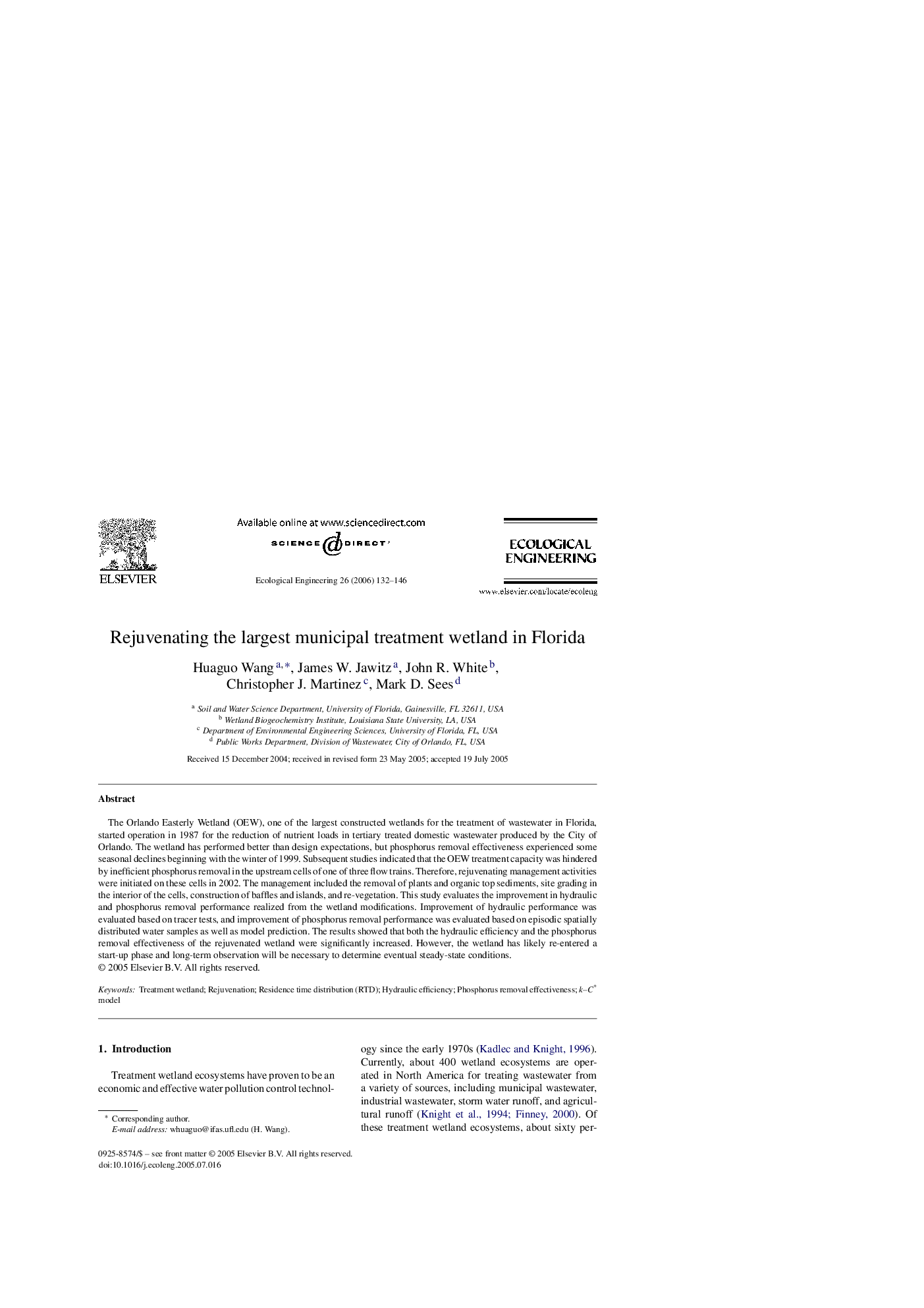| Article ID | Journal | Published Year | Pages | File Type |
|---|---|---|---|---|
| 4391342 | Ecological Engineering | 2006 | 15 Pages |
Abstract
The Orlando Easterly Wetland (OEW), one of the largest constructed wetlands for the treatment of wastewater in Florida, started operation in 1987 for the reduction of nutrient loads in tertiary treated domestic wastewater produced by the City of Orlando. The wetland has performed better than design expectations, but phosphorus removal effectiveness experienced some seasonal declines beginning with the winter of 1999. Subsequent studies indicated that the OEW treatment capacity was hindered by inefficient phosphorus removal in the upstream cells of one of three flow trains. Therefore, rejuvenating management activities were initiated on these cells in 2002. The management included the removal of plants and organic top sediments, site grading in the interior of the cells, construction of baffles and islands, and re-vegetation. This study evaluates the improvement in hydraulic and phosphorus removal performance realized from the wetland modifications. Improvement of hydraulic performance was evaluated based on tracer tests, and improvement of phosphorus removal performance was evaluated based on episodic spatially distributed water samples as well as model prediction. The results showed that both the hydraulic efficiency and the phosphorus removal effectiveness of the rejuvenated wetland were significantly increased. However, the wetland has likely re-entered a start-up phase and long-term observation will be necessary to determine eventual steady-state conditions.
Related Topics
Life Sciences
Agricultural and Biological Sciences
Ecology, Evolution, Behavior and Systematics
Authors
Huaguo Wang, James W. Jawitz, John R. White, Christopher J. Martinez, Mark D. Sees,
